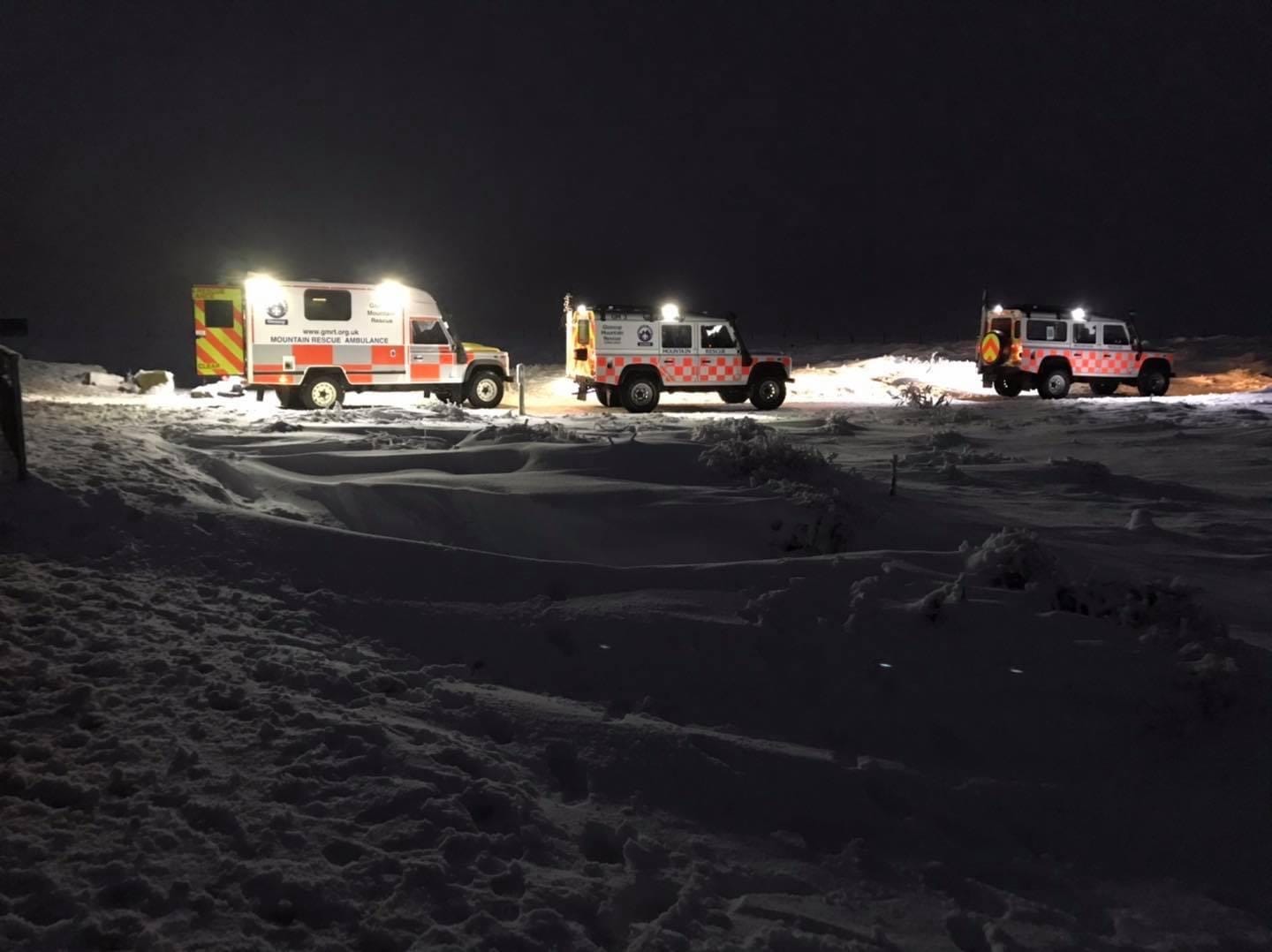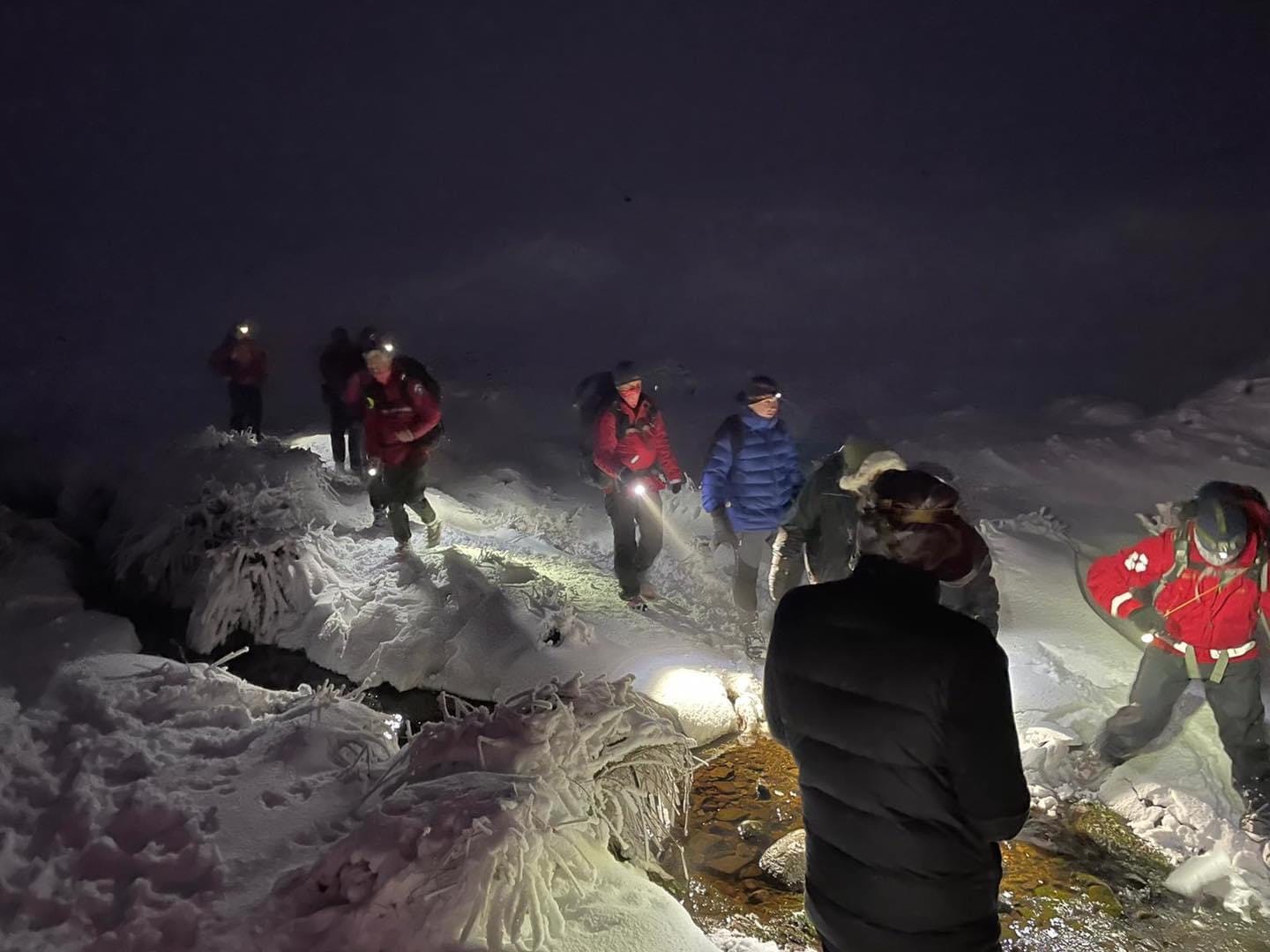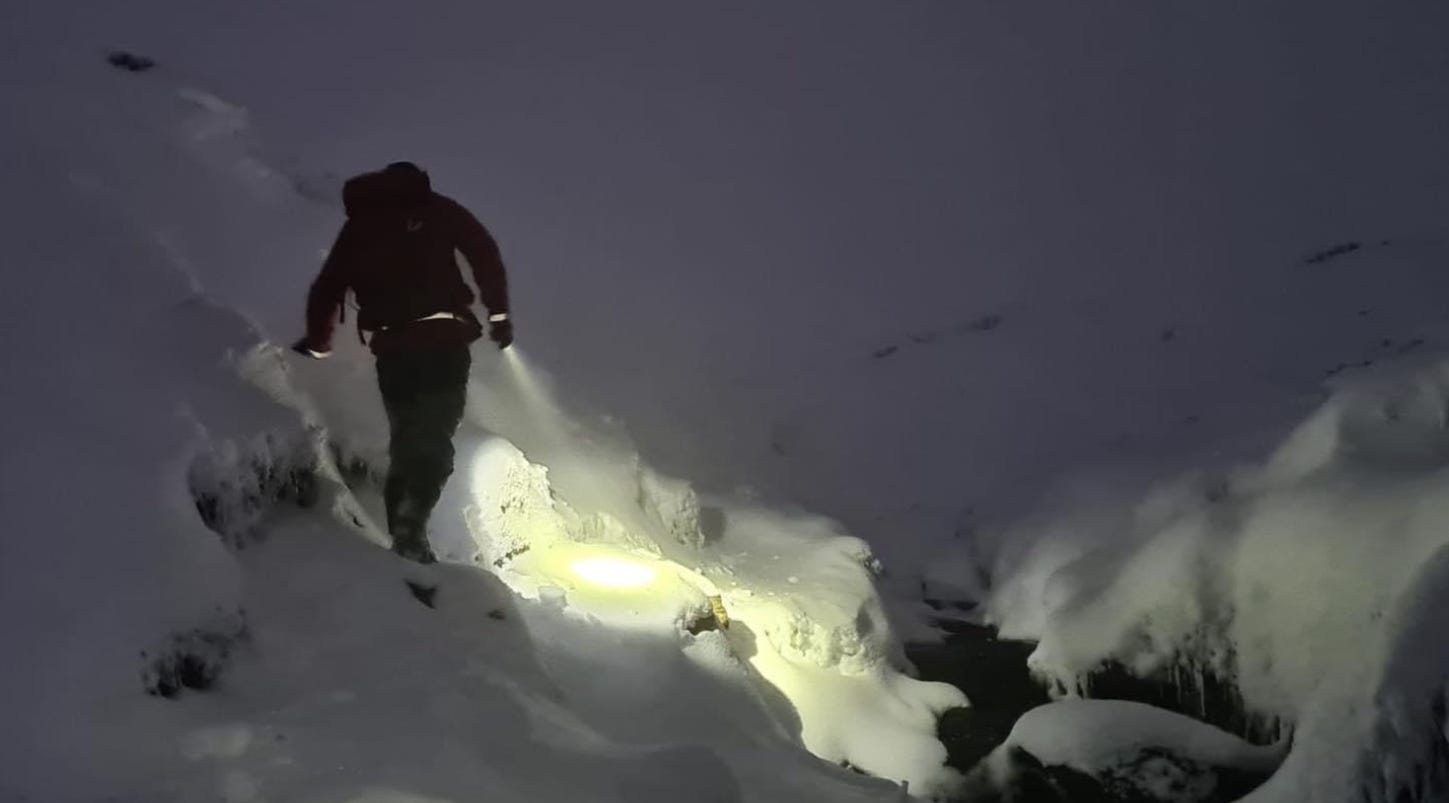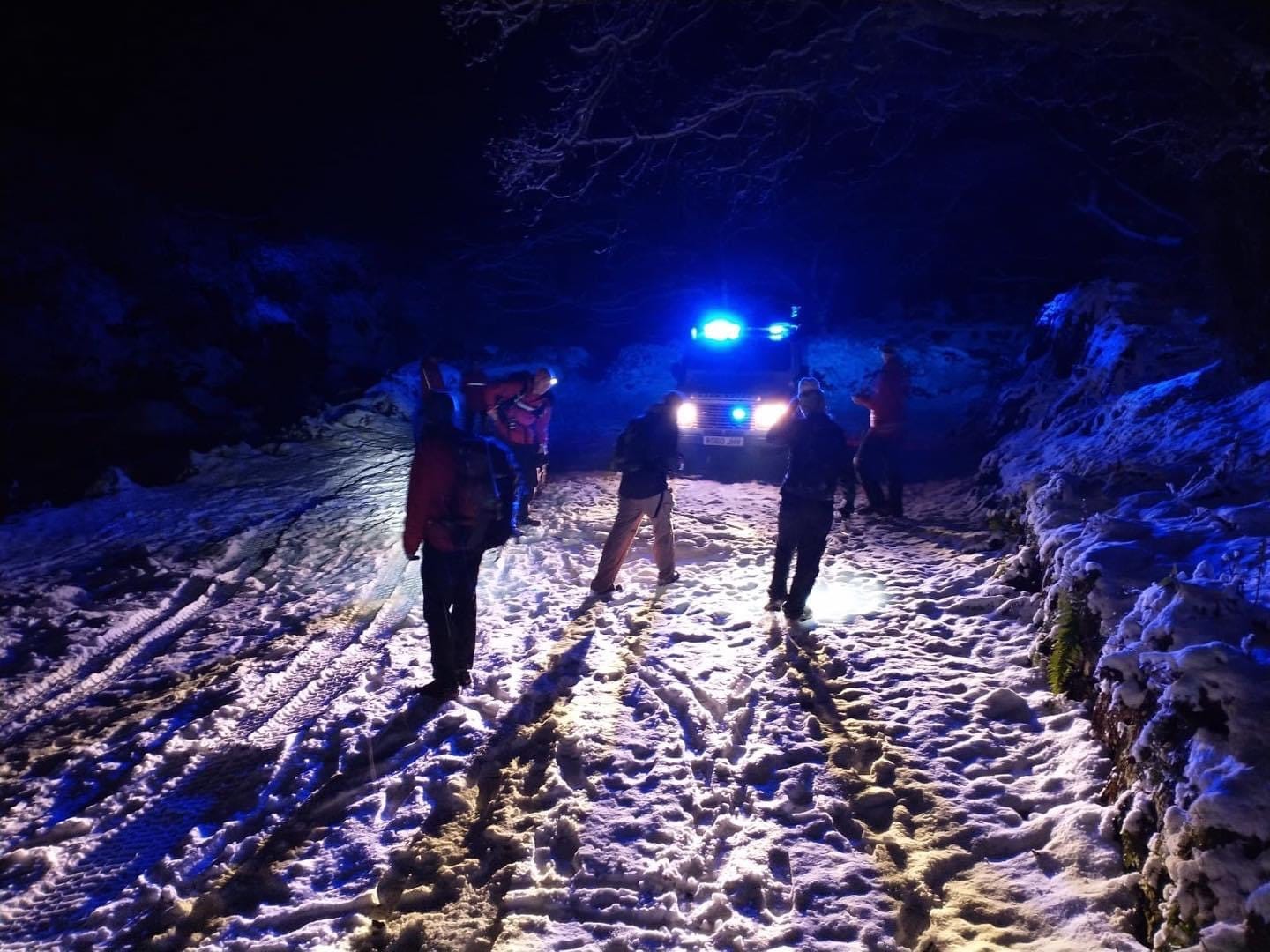By David Barnett
On Saturday afternoon a week ago, Peter Józefczyk was getting ready to make dinner at his home in Glossop in the High Peak. A little after 3.40pm, his phone buzzed with a text.
It wasn’t just any text. The message had been routed via the Sarcall platform, which is used by emergency services and rescue teams across the country to communicate. That meant only one thing: Someone was in trouble.
Peter is one of the volunteers with the Glossop Mountain Rescue Team, and the Sarcall message had gone out to him and his colleagues following a 999 call from high up on Bleaklow Moor. A party of four people had lost their way in atrocious conditions. Dinner would have to wait.
When the 999 call was made by the lost group, it went through to Derbyshire Police who then contacted the duty controller for the Peak District Mountain Rescue Organisation, of which the Glossop team is a part. Via the Sarcall system, it was sent to all available members in the vicinity.
Peter immediately headed down to Glossop ambulance station, where the team’s two vehicles were parked.

It was getting dark at this point, and the snow that had been falling all day was being whipped up into blizzards by strong winds. Peter took one of the vehicles and drove to Snake Summit, the highest point on the A57, from which the rescue operation would be mounted.
The basic details came from the police. Four people, two men and two women, had parked their car in Old Glossop and set off at about 10.30am. They were all in their mid-20s. And they had gone to look for the crash site of the B-29 bomber, which hit the moors in bad weather while on a routine flight to Warrington in 1948.
It’s a popular, if macabre, tourist attraction in the Peak District, with wreckage still scattered around more than 70 years later. The crash site only adds to the moor’s sombre air.
Sign up to The Mill’s free email list to get stories like this in your inbox every week.
The unforgiving moor
It is said that the spirits of Roman legionnaires haunt the Pennine Way. “Bleaklow can be an intimidating hill, a vast expanse of peat, groughs, bogs and moorland often enveloped in low cloud,” one local writer notes. “It’s the kind of place where an overactive imagination could conjure up all manner of ghostly encounters.”

The party from Manchester had assumed that despite the snow, they had plenty of daylight to see them up to the landmark and back again before dusk. They hadn’t reckoned with the capricious weather in the hills, which shifts around with the strong winds. It can change in an instant. Blue skies can give way to dense mist or — as in this case — driving snow in the blink of an eye.
“Once you start to reach a certain altitude, you can get caught out,” says Michael Di Paola, who knows this terrain better than most. He guides groups of walkers through the most beautiful stretches of the North West as part of his outdoors company Freshwalks, and he’s seen how changeable the elements can be.
A couple of years ago, in an early heatwave in May, Michael took a group to the Peak District. The day before he’d had a barbecue in 25-degree heat. When they hit the hills the rain set in and gale force winds started blowing. One member of the group almost had a panic attack, begging to go down. “Even I was freezing and I was fully prepared for anything,” he recalls.
People who had been basking in the sunshine one day were subjected to extreme conditions in an unfamiliar and hostile-seeming environment on the next, just a few miles from their homes. The following day it was blue skies and 28 degrees.

Michael is a major advocate for the benefits of being outdoors — in terms of physical and mental health, as well as bonding with the people you work with. But he thinks it’s irresponsible for local websites to promote walks to places like Bleaklow Moor without noting how dangerous they can be. “Even if you’ve got a map and a compass, and even if you know how to use them, without a torch you’re naked,” he says.
“I want people to enjoy the countryside, I want them to get up and get out there, but they have to be prepared. Otherwise, the consequences can be really very serious.”
Since lockdown began last March, Glossop Mountain Rescue Team’s call-outs have increased by 70 per cent. With the closure of gyms and leisure facilities, people are being encouraged to get out and walk for exercise.
The Peak District hills are only a 30-minute drive from Manchester city centre and can be seen on clear days, an inviting vista of wild, natural beauty. But what looks picture-postcard pretty from a distance can be a harsh, unforgiving environment close up. For the unprepared, it can be a risk to their lives.
The race to Hern Stones
“The road had just been opened by the Highways Agency because it had been shut for a number of days due to adverse weather,” says Peter. “When we got to Snake Summit the ground surface temperature was about minus five. The windchill probably equated to minus 12. Snow was blowing across the road and the light was fading quickly.”
Join The Mill’s free email list to get our journalism in your inbox
The walking group had no idea where they were when they made their 999 call. Low cloud meant visibility was poor, the temperature was plummeting, and there were potentially hundreds of miles of moor and hill to search to find them.
Except for one saving grace. They had mobile phone reception. The Glossop team was able to text them and get a reply, which allowed their location software to zero in on the exact point where the group was sheltering: Hern Stones, an eye-catching formation of rocks on the moor.

Among the volunteers with the mountain rescue team are some fell runners, hardy characters who know the landscape well and are used to moving through it quickly. With a report that one of the party was injured, a “fast team” was deployed, armed with warm clothing, medical equipment, and a pop-up tent for immediate shelter.
They set off at a run up the hills, with the main team bringing up the rear, carrying more kit including a stretcher. Being stretchered off the hills is one option if walkers are hurt. In more extreme cases, an air ambulance can be called in.

For the fast team, it was a half-hour run to Hern Stones, with the main team following on about a quarter of an hour behind them. When the fast team arrived, they found the party of four sheltering in the stones, powder-dry snow whipping across the mist-shrouded hills.
The four walkers were shaken and scared. They weren’t hikers kitted out with maps compasses and proper cold-weather clothing. Fortunately, though, they were not seriously hurt and were able to make the hour-long walk back to Snake Summit. From there they were taken back to their car in Old Glossop.
Peter knows how lucky this group were. They had phone service up in the hills, which many walkers don’t. Without that signal, there is a good chance they wouldn’t have been rescued. “Had they not had signal, or no working phones,” says Peter, “well… we could be talking about four fatalities here.”

“We're surrounded by beautiful countryside,” he says, reflecting on the incident. “By all means, come and enjoy it. But do it safely and do it prepared. Yes, it’s beautiful. But if you haven’t got the right sort of clothes and equipment and the knowledge about what you’re doing, it can also be fatal.”
Be better informed this year: Join The Mill as a member now to get our journalism in your inbox five days a week.
Write a letter: We now run letters in our Monday briefings. The idea is to hold our reporting to account and allow readers to add important details or bits of context we might have missed. Please write us a letter about today’s story, or anything you’ve read on The Mill recently, by replying to this newsletter and signing off with your name and where you live.
Our members’ stories this week:
- A fascinating feature about the “Roaring Twenties” in Manchester, as society bounced back from the Great War and the Spanish flu.
- An interview with an academic who has been studying French migrant experiences in Manchester before and after Brexit.
- A briefing on the latest Covid-19 numbers in Greater Manchester, and our analysis of how central government is “taking back control” from the North, based on two important stories about devolution this week.
Join now to read those stories, which are all here.
After the Spanish flu and global war came 'The Roaring 20's'. Will we see something familiar when we emerge from this pandemic?
— Omar Latif #FBPE (@OmarZLatif) 1:06 PM ∙ Jan 12, 2021
Fantastic and informative article from @ManchesterMill
"When Manchester Roared"

Comments
How to comment:
If you are already a member,
click here to sign in
and leave a comment.
If you aren't a member,
sign up here
to be able to leave a comment.
To add your photo, click here to create a profile on Gravatar.






